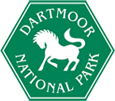Moor medieval
About 1000 years ago, medieval England began to prosper. The climate improved, making the growing season longer, with bumper harvests, and the population expanded. Competition for land forced people to start farming the fringes of the higher moor, like their Bronze Age ancestors. They laid out new fields, sometimes based on the stone boundaries of prehistoric fields, and terraced the hillsides. The high moor began to flourish once more.
Then, in the 1340's the Black Death struck. It killed thousands of people, and a worsening climate meant crops repeatedly failed. These upland settlements began to be abandoned as conditions deteriorated, and better land became available elsewhere.
The medieval communities survived on the lower ground and began to prosper again, due to the vibrant wool and tin industries.
When you look across Dartmoor today, you can still see much of the medieval landscape as it would have looked 700 years ago, with its old manor houses, churches and medieval fields.
Life on medieval Dartmoor
Over 5 years volunteers from across the area have been researching medieval life on the moor. They have looked at manorial records, old maps and dug through the archives. In this film presented by David Stone and Emma Stockley they highlight what life would have been like based on this research.
The story of iconic Hound Tor medieval village
This film tells the story of Hound Tor Medieval village and celebrates the contribution pioneering female archaeologist Marie Minter made towards our understanding and conservation of Dartmoor’s heritage.
Initially thought to have 8th century origins, the settlement is now considered to have emerged as a permanent village in the early 13th century.
As well as investigating the story of the dig and its finds the film reveals documentary evidence surrounding the marching of 26 men on the ‘vill’ in the 1230s and the tumultuous 14th century; during which climatic change, the agrarian crisis of 1315-22 and the Black Death of 1348-9 all left their mark on the village.
What caused Houndtor medieval village to be abandoned? Was it a case of retreat and defeat or were the villagers forced out?
Featuring interviews with surviving relatives of the 1960s archaeologists, local historians, volunteers and medieval re-enactments, it also includes new research and input from members of the Moor Medieval Study Group.
Medieval longhouses
Dartmoor is famous for its longhouses. These are medieval, yeoman farmers' houses, built into the slope of a hill. They are made, from the Dartmoor granite, in a rectangular shape with a central passage running through them. The farmer and his family lived at the top end of the house and his animals lived in the lower end. The body heat of the animals provided a, somewhat smelly, form of central heating.
Many of these houses still exist today, but have changed through time to suit the different generations, and many have lost their animal shippon.
Dartmoor National Park Authority has been restoring Higher Uppacott, a grade I listed longhouse, to help visitors get a sense of what life would have been like for these medieval farmers.
Discover more of the Dartmoor Story
Use the Heritage Trails interactive map to look for medieval records across Dartmoor, plan your own walk or download one of the heritage trails.
- Learn more about the Moor Medieval project, which is part of the Moor than meets the eye Landscape Partnership
- Find out more about Higher Uppacott and arrange a guided visit
- Buy a guide to the Hound Tor abandoned medieval village, one of Dartmoor's Top Ten archaeological sites , at Haytor Visitor Centre
- Jump forward in time In the footsteps of the Victorians
Do you want more information
- Read more about the medieval heritage of Dartmoor, and download fact sheets
- Explore the human timeline for Dartmoor
- Visit the Moor than meets the eye website to learn more about the exciting projects that are helping to protect and care for Dartmoor's heritage.


